Ron Gilad takes us on a tour of his new show at the Tel Aviv Museum of Art
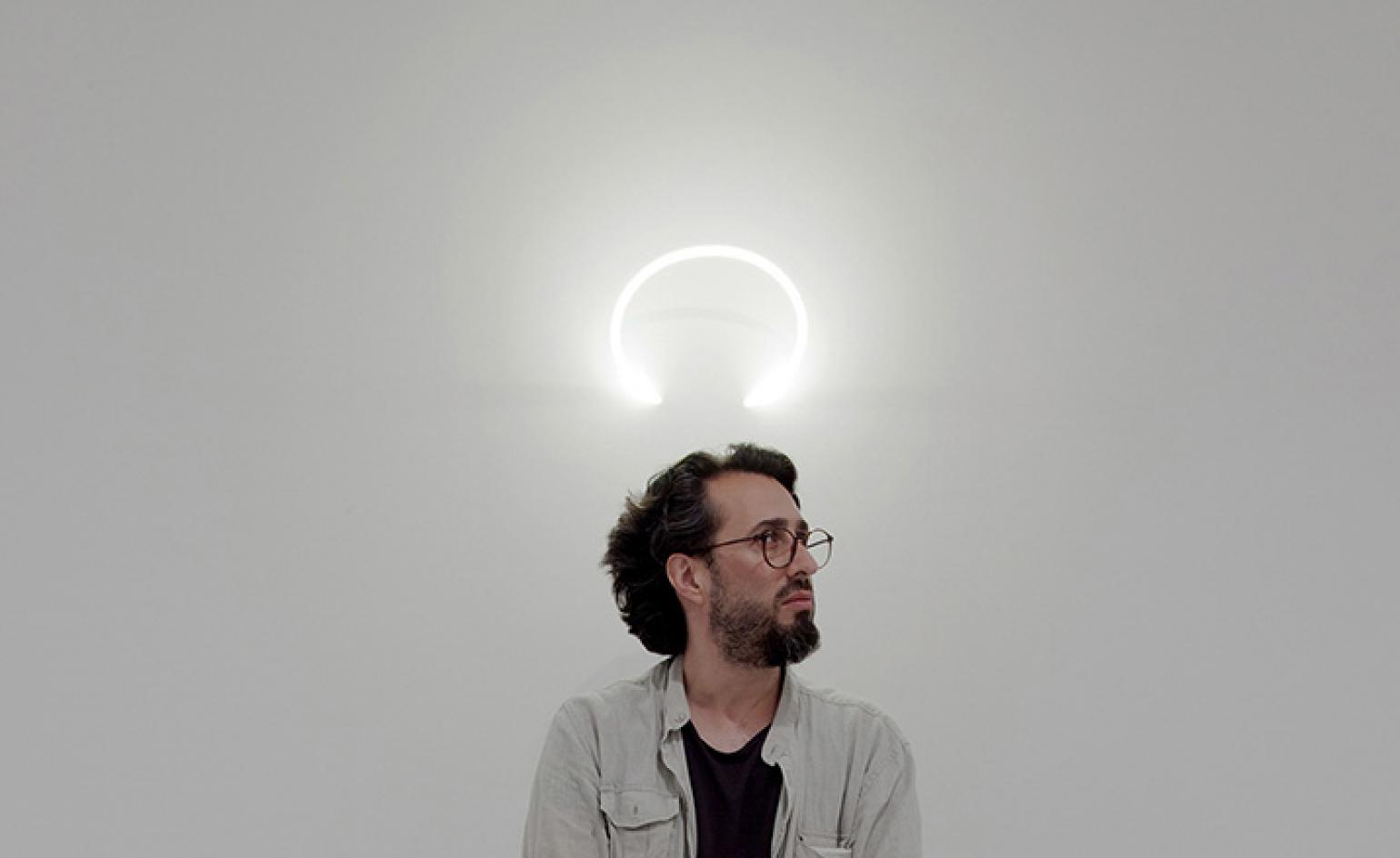
Wander around Ron Gilad's new exhibition at the Tel Aviv Museum of Art and you'll get an unnerving feeling you are being watched. Sometimes the suggestion is subtle - implied by a light behind a closed door in the gallery's display wall - and at other times it's more direct, as with 'Peepholes', a work that spies on you as you peruse the show. Another exhibit ('The Man in the Wall') features a dagger protruding through the plaster with a blood-red thread trailing from its blade. There's definitely life inside these walls - and it can often be quite threatening.
'The exhibition started by dealing with walls as boundaries, which can bring a sense of security but can also be a little frightening,' says the Tel Aviv-based artist-cum-designer. 'There are so many different emotions and points of departure for each and every piece.'
Trickery and wit have long been part of Gilad's oeuvre, whether he is creating limited edition art pieces for the likes of Dilmos Gallery, or art-infused industrial design works for brands such as Molteni & C - scooping the 2013 Wallpaper* Designer of the Year award along the way. 'He sustains his vision of design as a form of amusement, a provocation, a humoristic and at times enigmatic act,' says Meira Yagid-Haimovici, curator of design and architecture at the Tel Aviv Museum of Art.
In the Museum's Herta and Paul Amir Building, this playfulness is at its height, as the show's title 'The logical, the ironic and the absurd' attests. To create some of the approximately 100 pieces in the show - most of which were produced in 2013 - Gilad has stripped objects of their intended functions, abstracted and used them to new ends, such as series of Thonet chairs that have been miniaturised and turned into legs for a sofa, or a pair of wooden doors that have been bent together to form a gate.
Meanwhile, standing proud at the end of the exhibition is 'Butler No.4', an extension to his most surreal series to date. From the front, the sculpture (originally commissioned for our Handmade exhibition in Milan earlier this year) looks like a headless valet holding up a panel of wool as a room divider, while seen from behind, it's nothing more than an abstract stick figure. In this exhibition the Butler screens nothing, so his function becomes even further removed.
Witty as Gilad's works may be, they never feel gimmicky. Instead, they have an unusual beauty; even a poignancy at times. Many of the works dwell on the notion of 'home', a recurring theme for Gilad, expressed as far back as 2010 with his project '20 houses for 20 Friends'. At the Tel Aviv Museum of Art, there's 'Flat Façade', which looks like a normal house from the front but is completely flat when seen from the side. Then there's 'Smoking House', whose outline is fashioned from a pencil, with a hole in the roof emitting clouds of lead smoke.
Why this constant interest in the home? 'I think I have always felt foreign, and that sensation has been extreme in chaotic New York,' says the artist, who has only just returned to Israel after 11 years in the US. 'So these are like symbols of where I want to be.' 'Smoking' house suggests the warmth and heat within, while 'Flat Façade' is a sanctuary that can't quite be entered.
Part of the beauty of Gilad's work also lies in its simplicity. Even some of the largest pieces are merely suggested with outlines. 'I'm interested in the skeletons, which for me are the essay of the piece,' he explains. 'I never try to cover things with flesh and skin.' He also has the remarkable ability to make hefty materials seem lightweight and malleable: clouds are expressed in marble and a tent made from lead looks like it could float off in a gust of wind. It's this visual brevity and lightness of touch that gives his works their punch. In his hands, the smallest of sculptural details can be powerfully suggestive, which makes the life inside the gallery's walls all the more frightening.
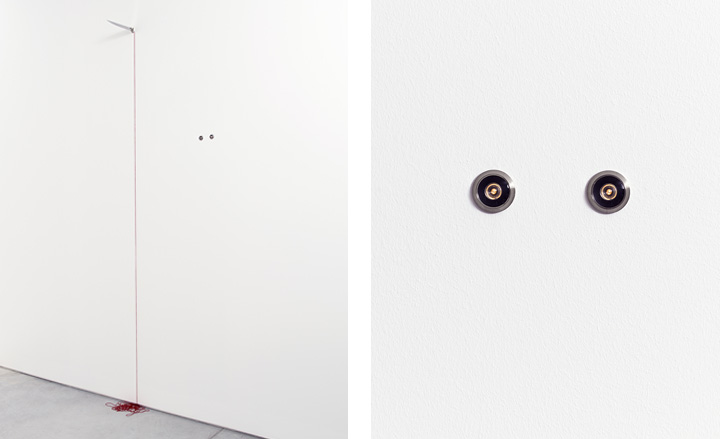
Of the approximately 100 works in the exhibition - most of which were created in 2013 - many are built into the fabric of the gallery itself, suggesting there's life inside the walls. This takes an unnerving turn in the case of 'The Man in the Wall' (left) and 'Peepholes'. Says Gilad: 'The exhibition started by dealing with walls as boundaries, which can bring a sense of security but can also be a little frightening'
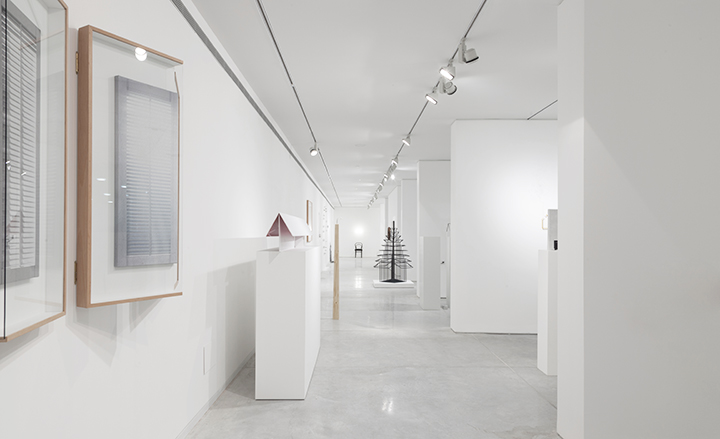
Installation view at 'Ron Gilad: The logical, the Ironic and the Absurd' in the Herta and Paul Amir Building at the Tel Aviv Museum of Art. 'Shutters' (pictured, left), is made from paintings of shutters on canvas that have been framed and hung on hinges so that they open and close like real shutters. Meanwhile, another piece of trickery comes in the shape of 'Flat Façade' (second from left), which looks invitingly like a real house from the front, yet its façade is completely flat from the side, as its name suggests
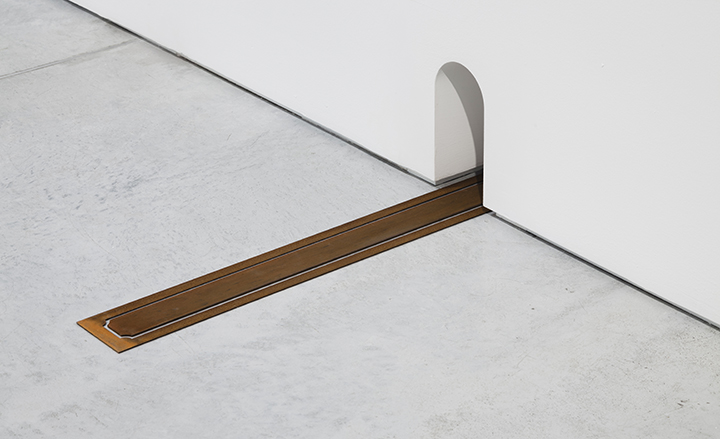
'Welcome Out' perplexingly leads the viewer no-where
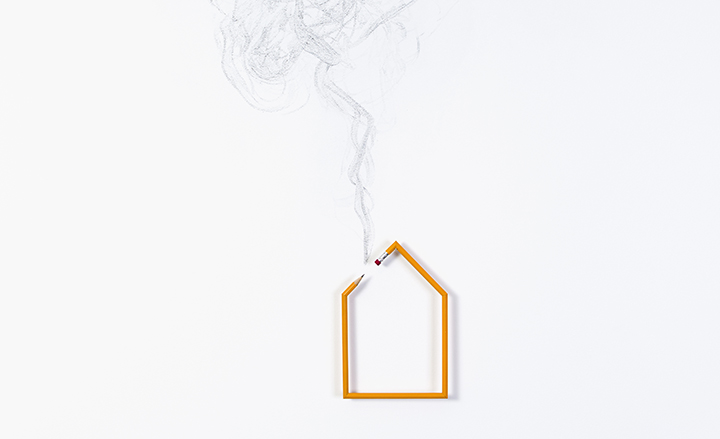
Many of Gilad's work explore the concept of 'home'. 'I think I have always felt foreign, and that sensation has been extreme in chaotic New York,' explains the designer, who has just moved back to Tel Aviv after 11 years in the US. 'So these are like symbols of where I want to be.' In 'Smoking House', pictured, 'the smoke represents life, the fact that there is warmth and heat inside the house'
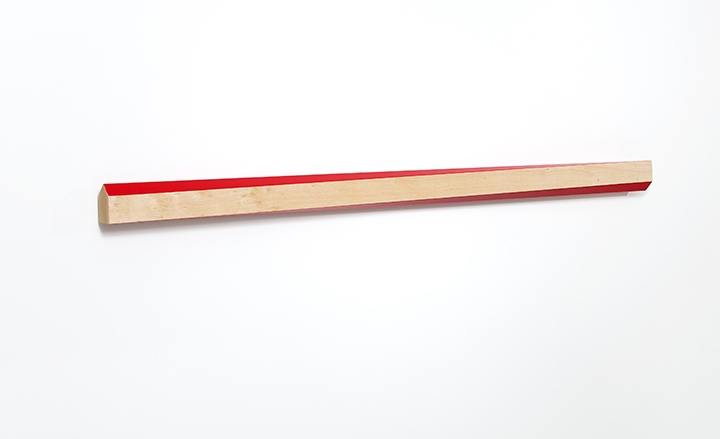
Gilad frequently returns to the idea of the red-roofed house, 'the very classic icon of what is a house'. With 'Twisted House', he has literally spun the red-roofed house on its head
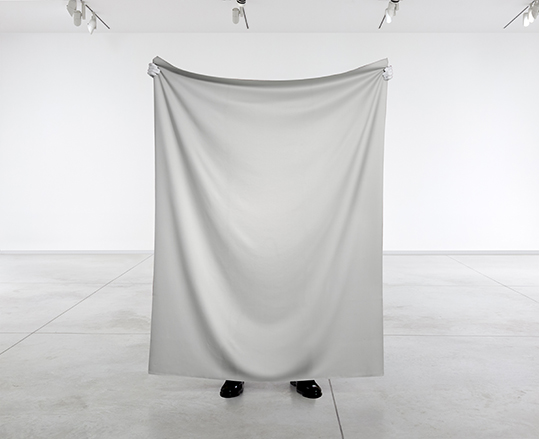
'Butler No. 4' was originally commissioned for Wallpaper's Handmade exhibition in Milan during the Salone del Mobile and follows on from Gilad's 'Butler' series - his 'investigation into the absurd' - which first debuted in 2009. The disembodied valet holds up a panel of wool fabric from the Woolmark Company, acting as a screen. Yet in this exhibition he is hiding nothing, so his function is removed altogether. Viewed from behind, his form is completely abstracted into a wireframe stick figure
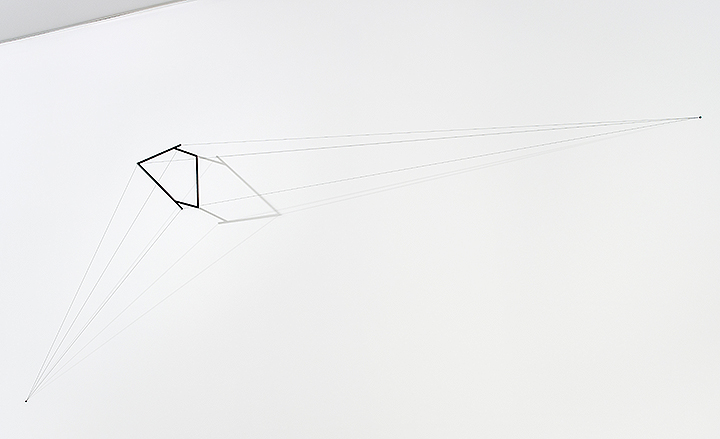
The artist may be fond of trickery in his work but 'I am very literal with my names,' he insists. Pictured is 'House with Two Vanishing Points'
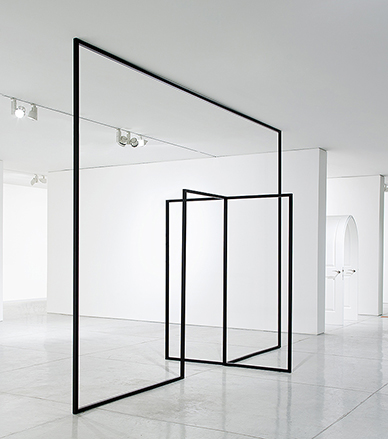
'Façade No. 10' is made from painted aluminum
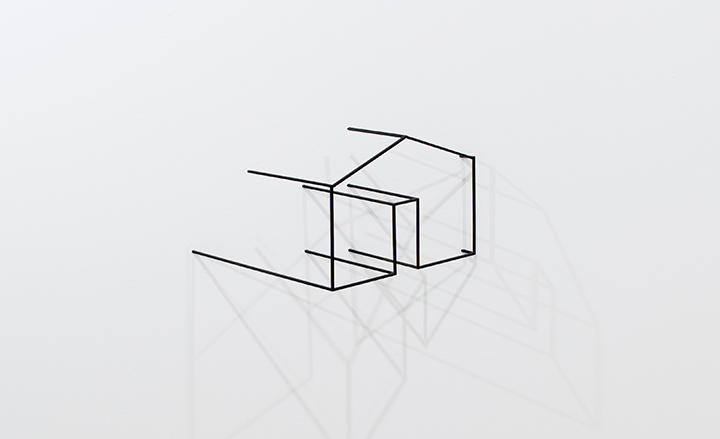
'Pavilion', 2013. Part of the beauty of Gilad's work is its simplicity and linearity. 'I'm interested in the skeletons, which for me are the essay of the piece,' he explains. 'I never try to cover things with flesh and skin'
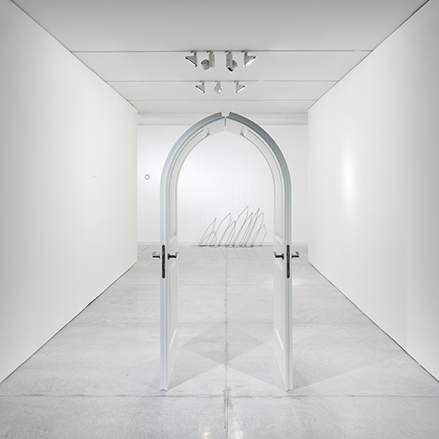
To create some of his sculptures, Gilad has stripped objects of their intended functions and used them to new ends, such as a pair of doors that have been curved inwards to create 'Gate'. 'It can lead you to another world,' he says. 'You must use your imagination'
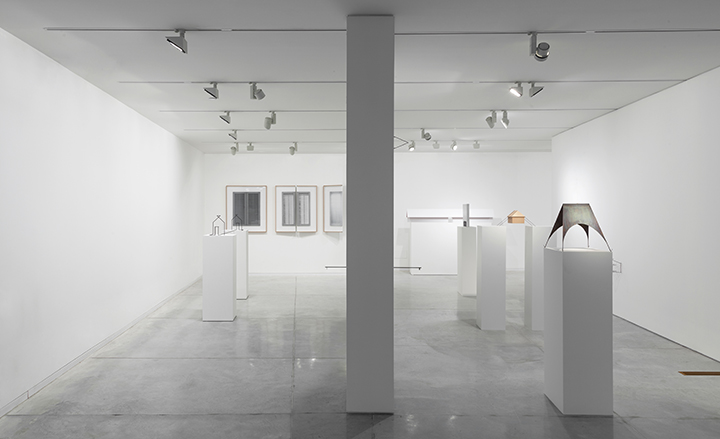
Installation view at the Tel Aviv Museum of Art
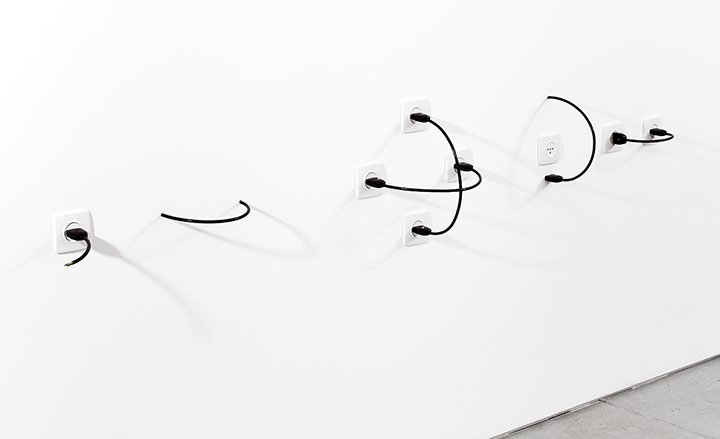
'Voltage' is a highly charged sculpture made from electrical components
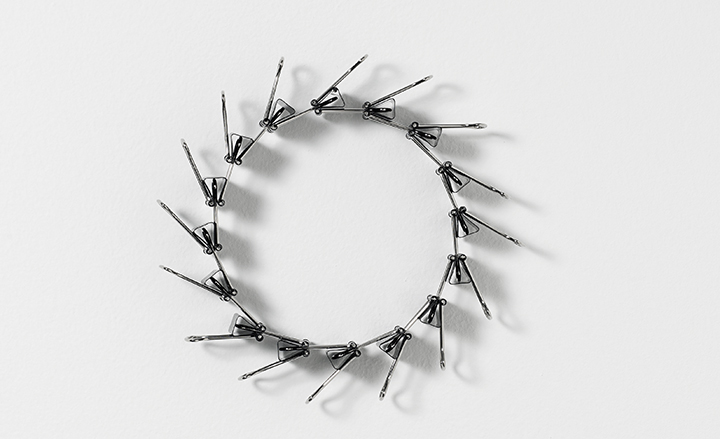
'City Square', 2002, is an earlier example of Gilad's reuse of existing materials, which also muses on urban spaces. 'It's important for me to show [in this exhibition] that I am not inventing anything new - I am using the same ideas with different outcomes'
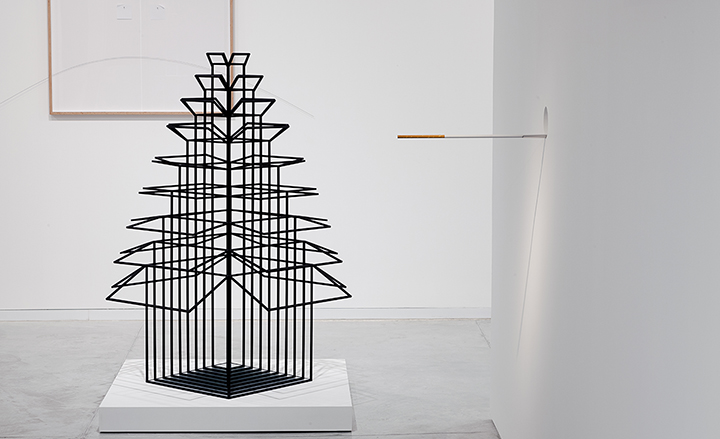
'Nine boxes' follows on from earlier works that spring from 'an obsession about domestic spaces, about boxes'. Like all the works in the show, the boxes' function has been stripped away. Why did he choose to show so many functionless works? 'I think you can show chairs and lamps everywhere else. This gallery is the right volume to take things to extremes'
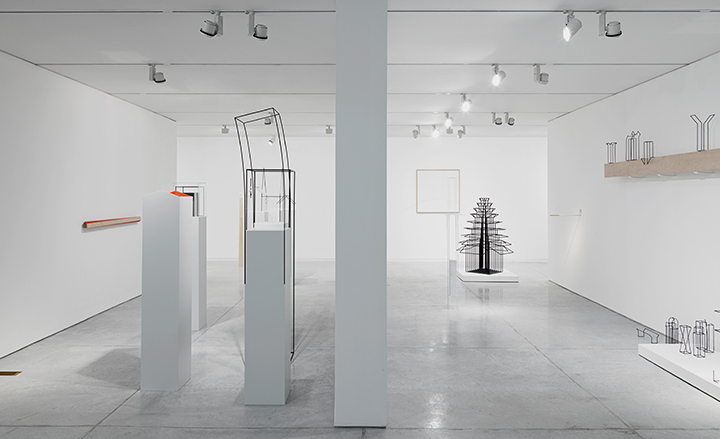
Installation view at the museum. Pictured, left, are his explorations into the idea of modes of display in gallery contexts, such as frames and pedestals. 'Here, it began with the idea that perhaps the pedestal has its own life,' says Gilad. In one work, the pedestal has been inverted into a hollow artwork, while in another, the pedestal and the sculpture are one. Pictured, on the right, are more explorations into boxes and the way they open and close
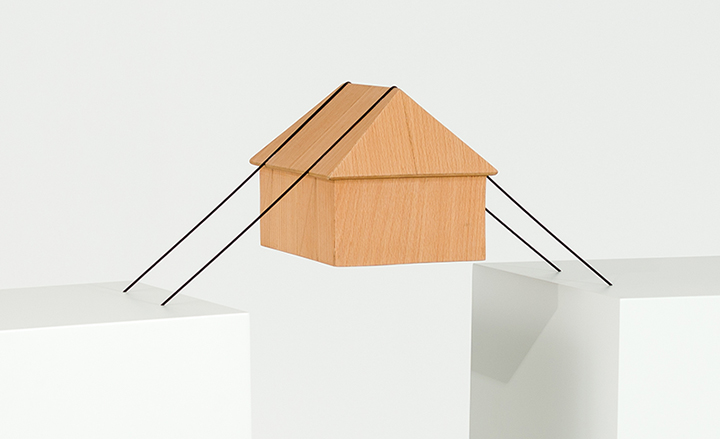
'Floating House' hovers between two pedestals in the exhibition
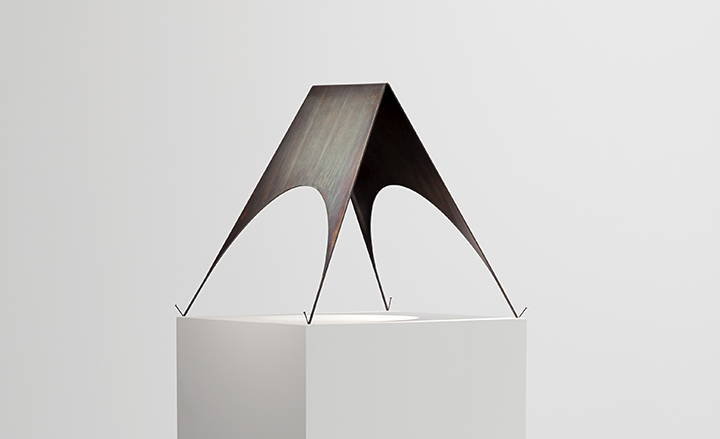
It may be crafted from oxidised iron, but 'Tent' looks like it could float away in a gust of wind
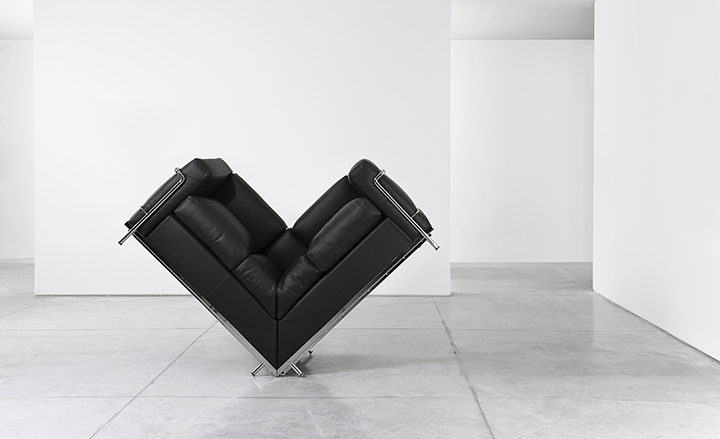
To create 'RG2', once again a functional object has been turned on its head - or corner, to be more precise. Sit on this at your own peril
Receive our daily digest of inspiration, escapism and design stories from around the world direct to your inbox.
Malaika Byng is an editor, writer and consultant covering everything from architecture, design and ecology to art and craft. She was online editor for Wallpaper* magazine for three years and more recently editor of Crafts magazine, until she decided to go freelance in 2022. Based in London, she now writes for the Financial Times, Metropolis, Kinfolk and The Plant, among others.
-
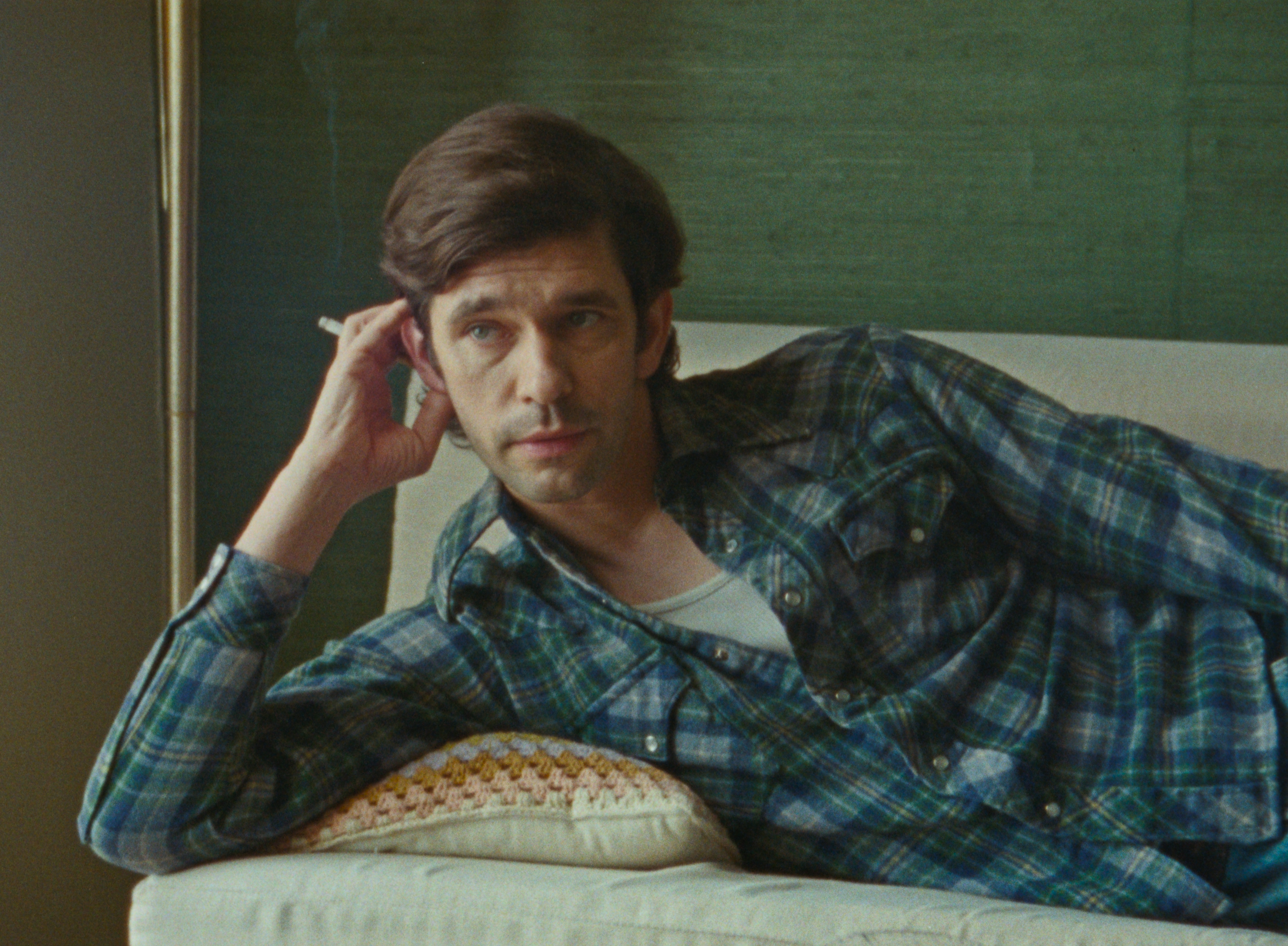 Can the film 'Peter Hujar's Day' capture the essence of the elusive artist?
Can the film 'Peter Hujar's Day' capture the essence of the elusive artist?Filmmaker Ira Sachs and actor Ben Whishaw bring Peter Hujar back to the front of the cultural consciousness
-
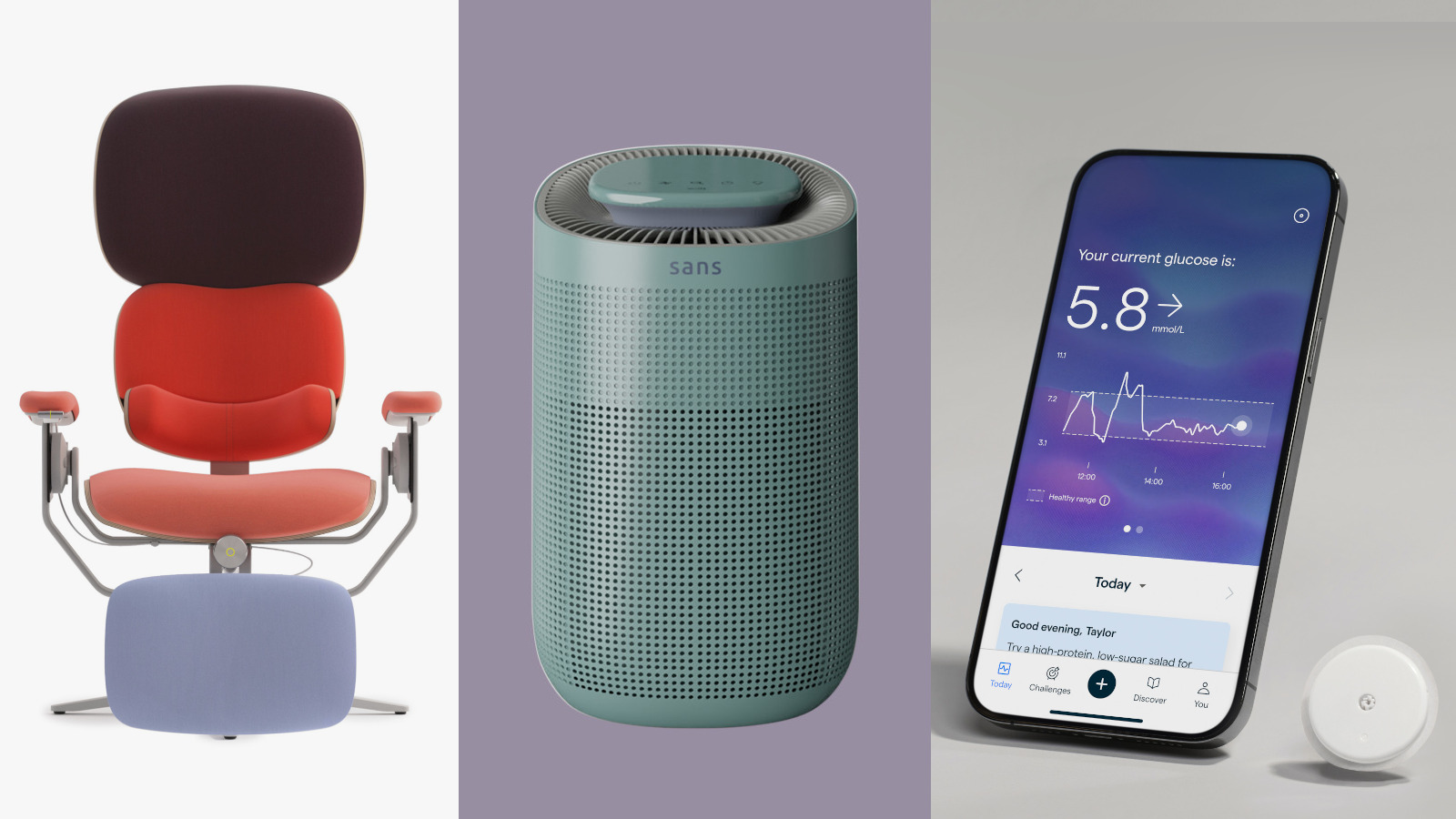 New tech dedicated to home health, personal wellness and mapping your metrics
New tech dedicated to home health, personal wellness and mapping your metricsWe round up the latest offerings in the smart health scene, from trackers for every conceivable metric from sugar to sleep, through to therapeutic furniture and ultra intelligent toothbrushes
-
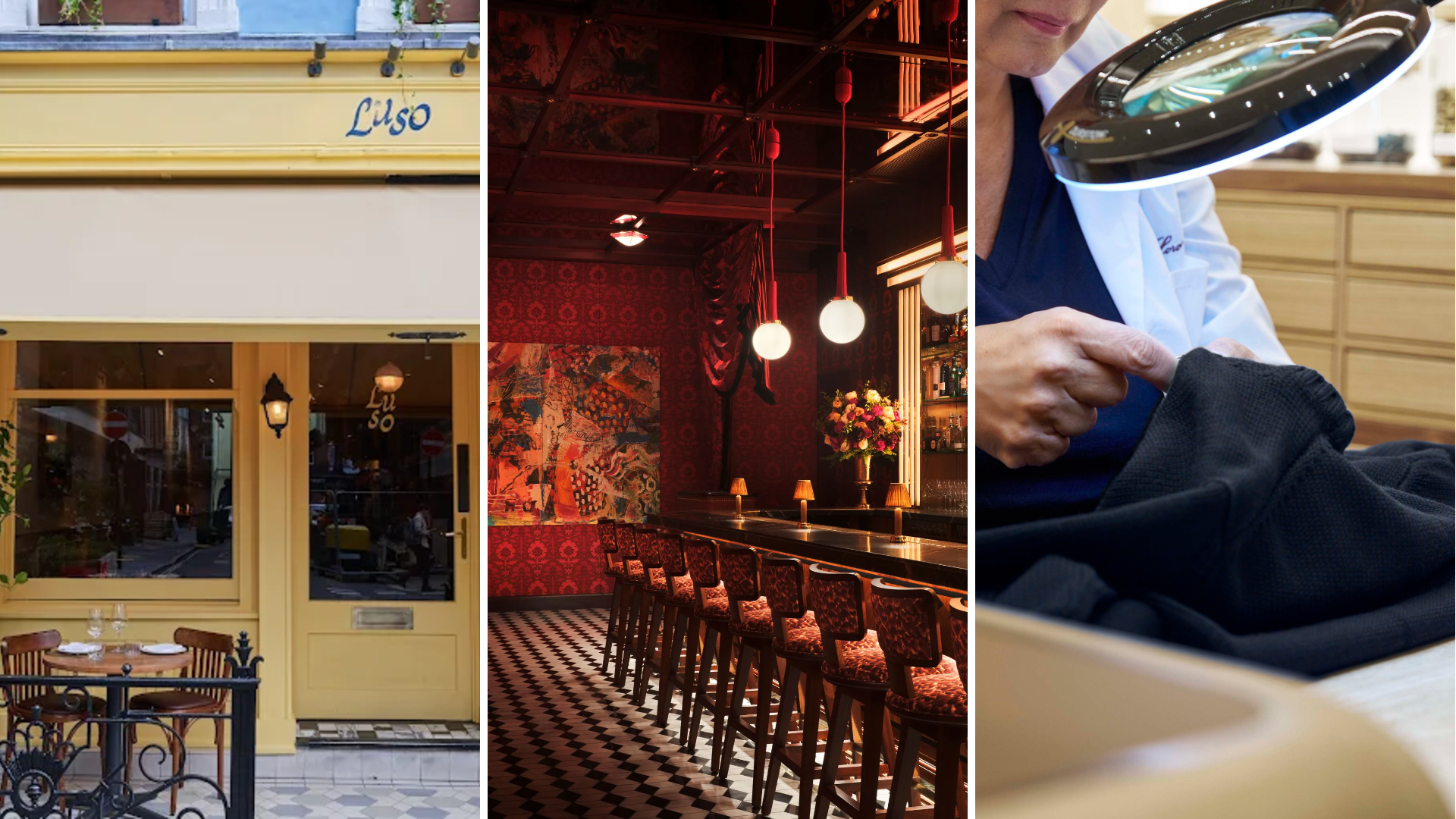 Out of office: The Wallpaper* editors’ picks of the week
Out of office: The Wallpaper* editors’ picks of the week'Tis the season for eating and drinking, and the Wallpaper* team embraced it wholeheartedly this week. Elsewhere: the best spot in Milan for clothing repairs and outdoor swimming in December
-
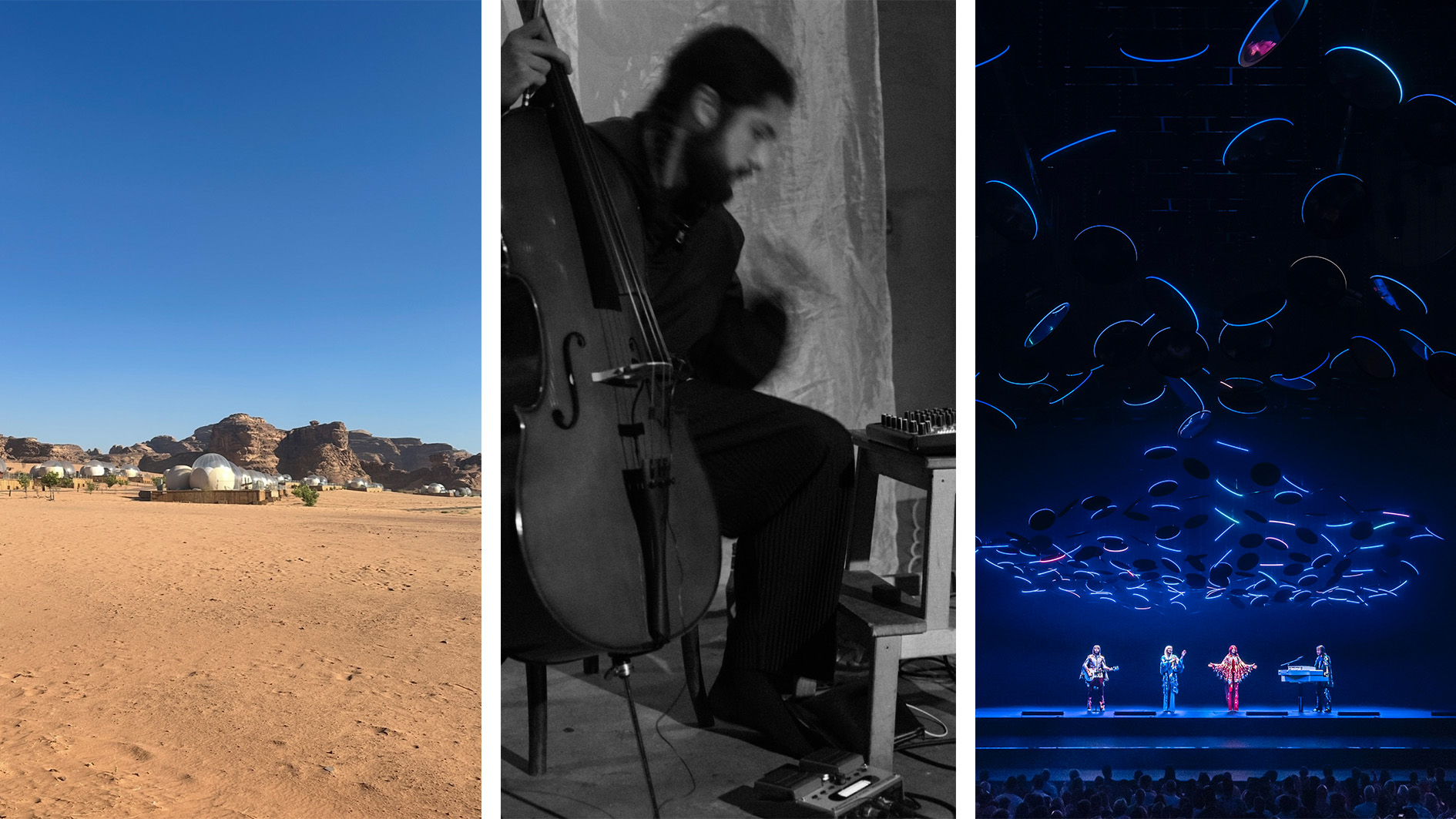 Out of office: what the Wallpaper* editors have been up to this week
Out of office: what the Wallpaper* editors have been up to this weekThis week saw the Wallpaper* team jet-setting to Jordan and New York; those of us left in London had to make do with being transported via the power of music at rooftop bars, live sets and hologram performances
-
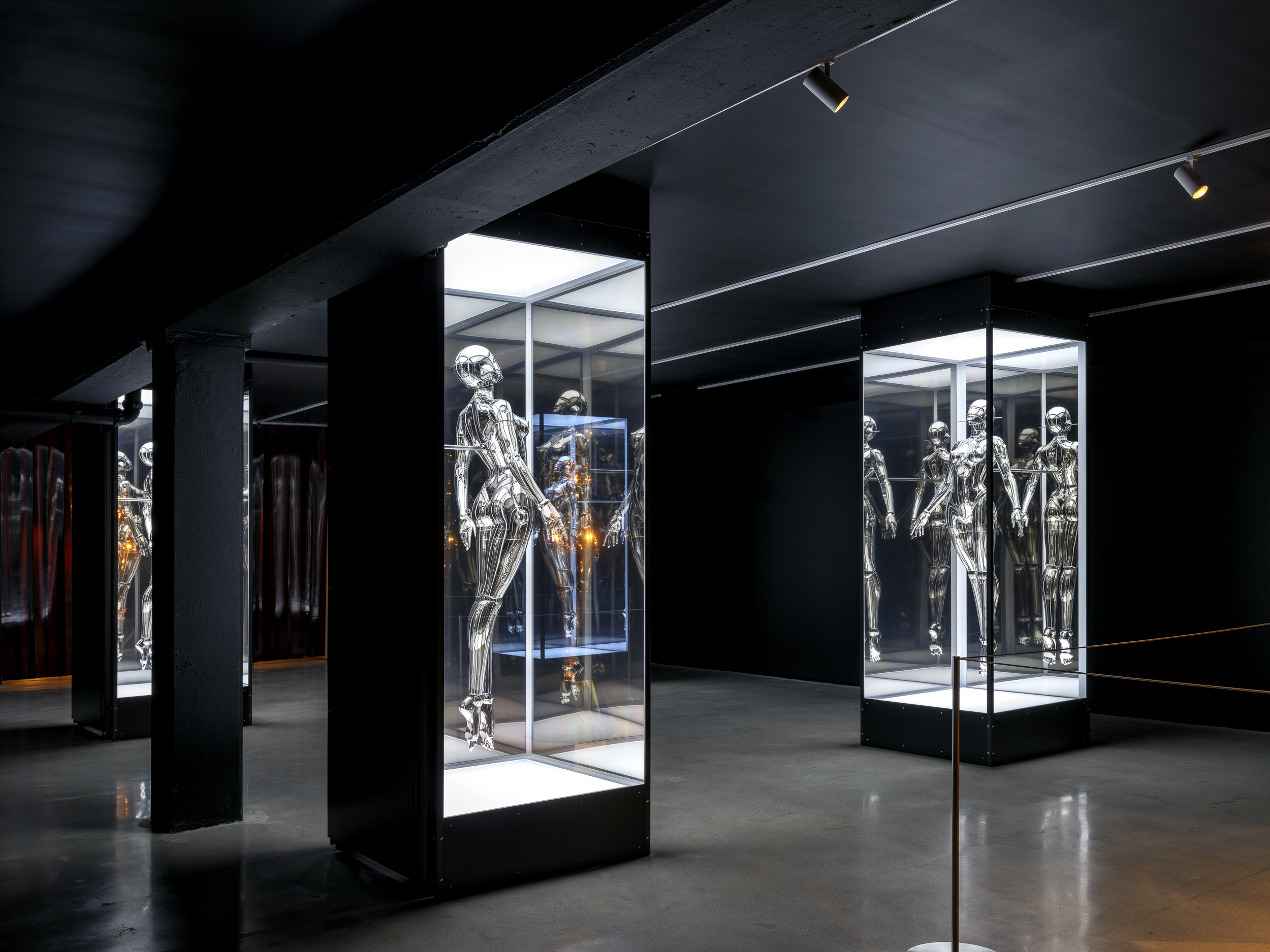 Miami’s new Museum of Sex is a beacon of open discourse
Miami’s new Museum of Sex is a beacon of open discourseThe Miami outpost of the cult New York destination opened last year, and continues its legacy of presenting and celebrating human sexuality
-
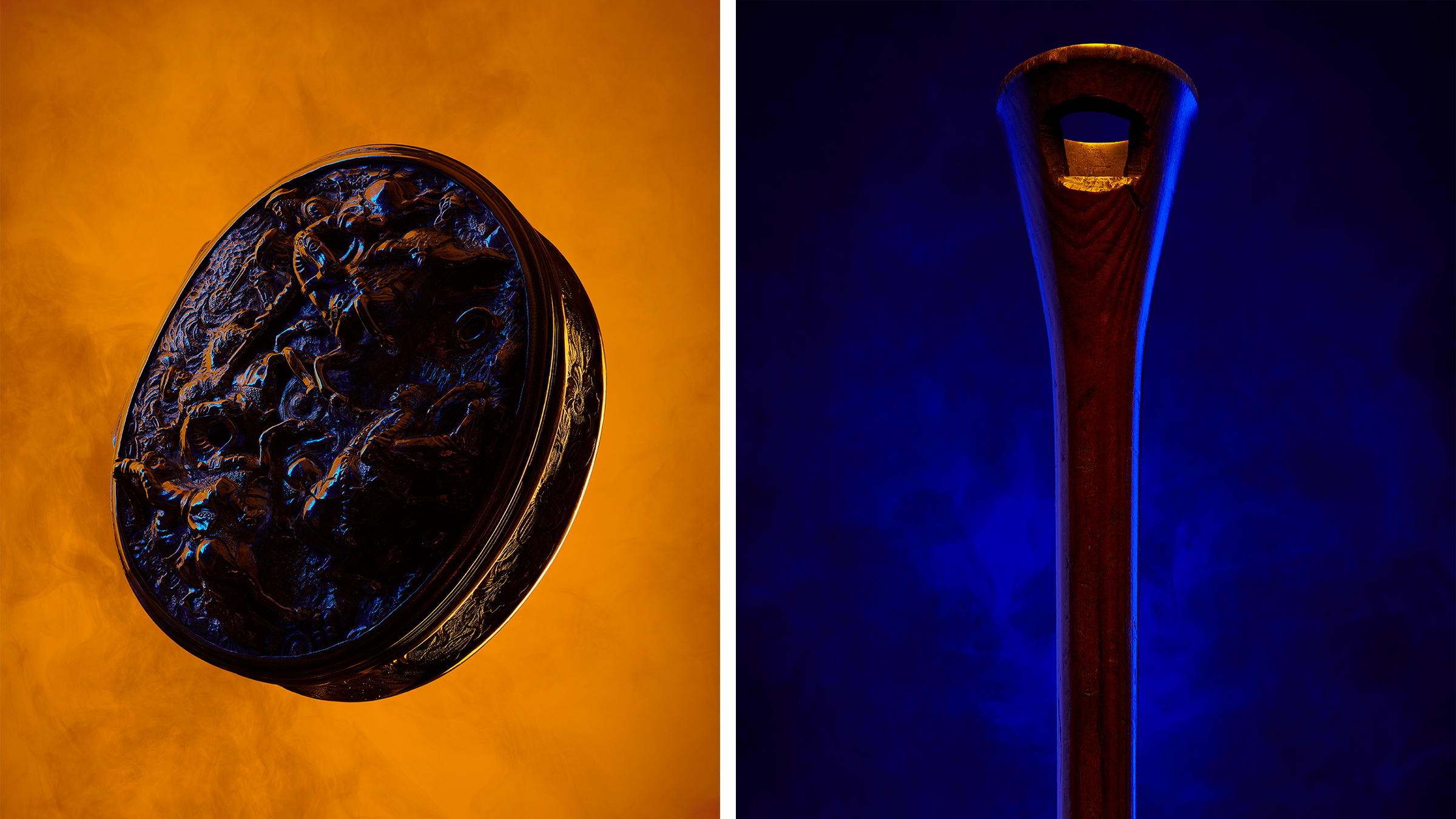 Royal College of Physicians Museum presents its archives in a glowing new light
Royal College of Physicians Museum presents its archives in a glowing new lightLondon photography exhibition ‘Unfamiliar’, at the Royal College of Physicians Museum (23 January – 28 July 2023), presents clinical tools as you’ve never seen them before
-
 Museum of Sex to open Miami outpost in spring 2023
Museum of Sex to open Miami outpost in spring 2023The Museum of Sex will expand with a new Miami outpost in spring 2023, housed in a former warehouse reimagined by Snøhetta and inaugurated with an exhibition by Hajime Sorayama
-
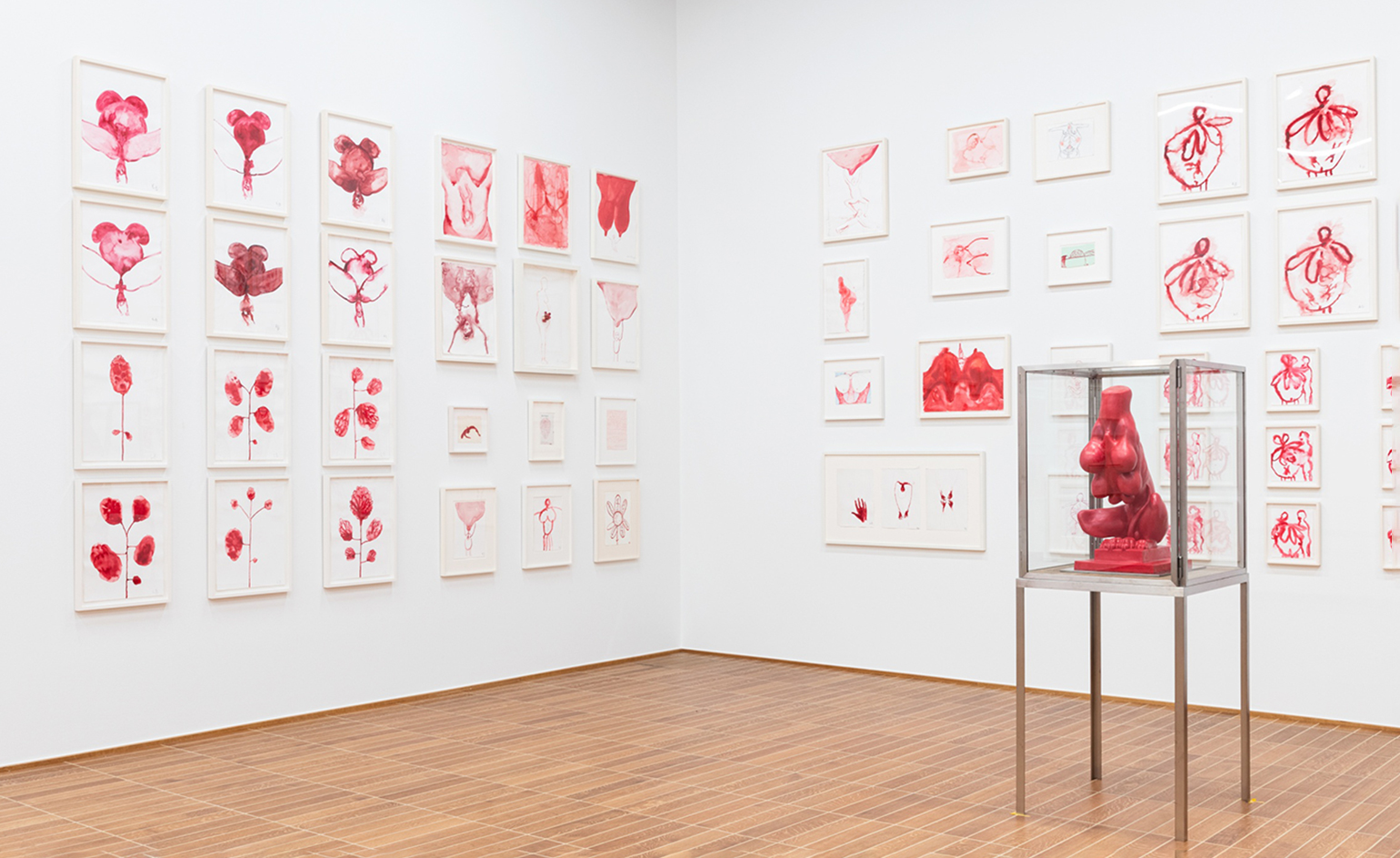 Jenny Holzer curates Louise Bourgeois: ‘She was infinite’
Jenny Holzer curates Louise Bourgeois: ‘She was infinite’The inimitable work of Louise Bourgeois is seen through the eyes of Jenny Holzer in this potent meeting of minds at Kunstmuseum Basel
-
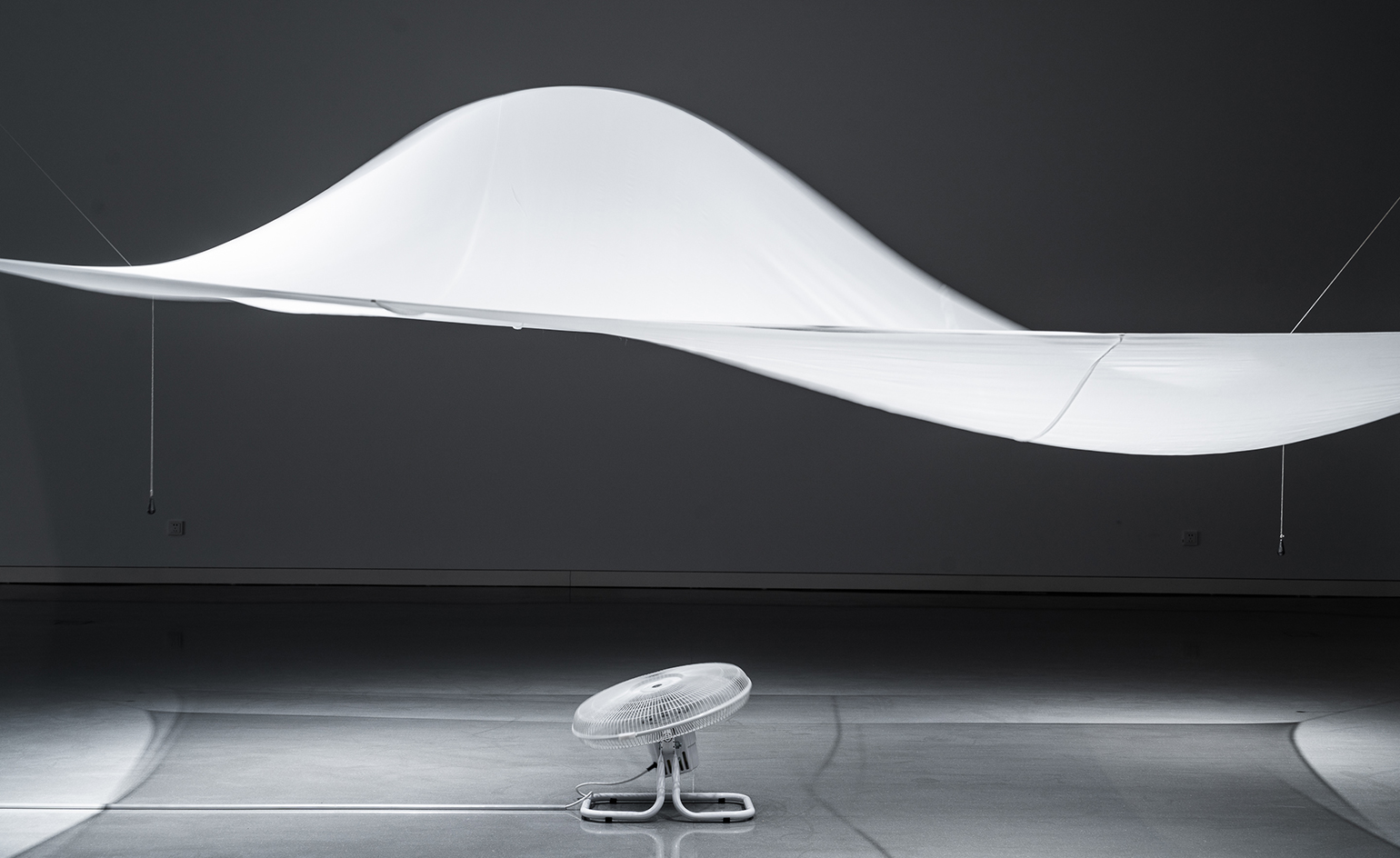 ‘A Show About Nothing’: group exhibition in Hangzhou celebrates emptiness
‘A Show About Nothing’: group exhibition in Hangzhou celebrates emptinessThe inaugural exhibition at new Hangzhou cultural centre By Art Matters explores ‘nothingness’ through 30 local and international artists, including Maurizio Cattelan, Ghislaine Leung, Hiroshi Sugimoto, Liu Guoqiang and Yoko Ono
-
 Three days in Doha: art, sport, desert, heat
Three days in Doha: art, sport, desert, heatIn our three-day Doha diary, we record the fruits of Qatar’s cultural transformation, which involved Jeff Koons, a glass palace of books, and a desert sunset on Richard Serra
-
 Hong Kong’s M+ Museum to open with six thematic shows
Hong Kong’s M+ Museum to open with six thematic showsAsia’s first global museum of contemporary visual culture will open on 12 November in Hong Kong’s West Kowloon Cultural District, with six themed shows spanning art, design and architecture